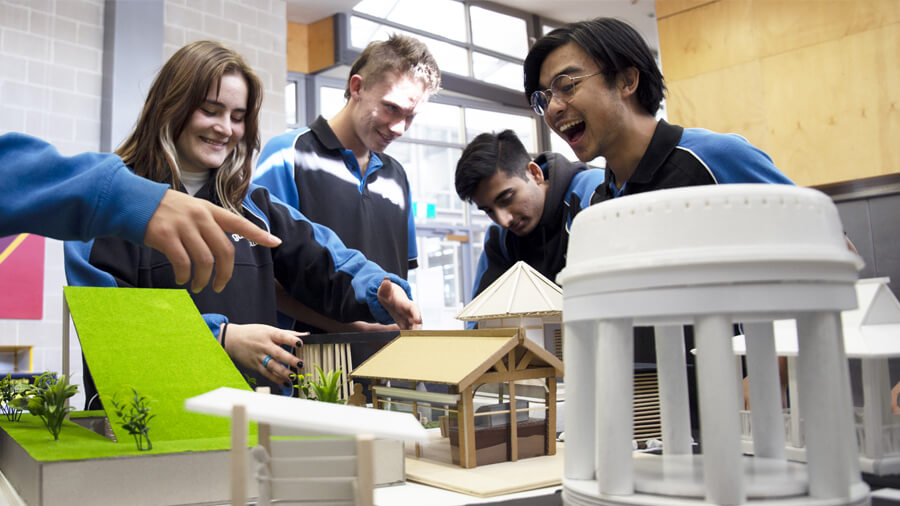
Course information
Designed Environments focuses on the fields of architecture, interior design, urban design, landscape and sustainable building design. This course gives students opportunities to explore the concept that good design has the power to transform and provide lasting solutions that improve our lives. It considers sustainability, aesthetics, human interaction, ergonomics, the ethical use of space and functionality. Students apply problem solving skills in making appropriate design solutions to create attractive and functional spaces such as playgrounds, buildings and galleries.
Designers apply creative and open approaches to defining and solving problems, to enable businesses and industries to overcome rigid or outdated ways of doing things. Design has applications in the creation and improvement of cities, buildings, transport networks, furniture, websites, processes, bridges, landscapes and environment. Designers are innovators who enhance the way we live and interact with the world around us.
In Designed Environments, students will apply design and systems thinking, and design processes to investigate and refine ideas. They will plan and evaluate design solutions to develop innovative design projects, services and environments. Students will learn about the design process and its application, and develop research skills, computational thinking and a range of communication skills. They will have opportunities to use design thinking and apply creativity through structured, collaborative and project based learning, solve problems, develop practical skills and apply critical thinking in the development of new ideas.
A course of study in Designed Environments forms a pathway for further study in areas such as building design, civil engineering, and architecture, interior design, set design and landscape design, concepts design and furniture design.
Course pattern
May be available as a Minor or Major.
Suggested Minor course
Semester | Unit |
|---|---|
1 | Architectural Design |
2 | Town Planning & Urban Design |
Suggested Major course
Semester | Unit |
|---|---|
1 | Architectural Design |
2 | Town Planning & Urban Design |
3 | Interior Design |
4 | Landscape Architecture |
Unit descriptions
Architectural Design
Examines architecture and design theory. Students learn that architects investigate new technologies and materials, and environmental sustainability. Students engage with established methodologies for generating creative design concepts, learning strategies for idea generation and communication. Students learn the contextual elements that contribute to designed environments including ethics.
Town Planning & Urban Design
Town Planning and Urban design are concerned with shaping cities, towns and regions by managing the development, infrastructure and services in order to make them attractive and convenient for people who live there. Students learn that design concepts include sustainability, aesthetics, human interaction, the ethical use of space and functionality.
Interior Design
Interior designers shape perceptions and responses to physical space (including commercial, residential and temporary) through form, light, colour, texture, and sound. Good interior design enables spaces to be more efficiently, comfortably, aesthetic fulfilling, evoke an emotional response and are functional for its user(s). Students learn the principles of design, the elements they need to consider in their design solution and communication skills in presenting ideas through using appropriate terms and technology.
Landscape Architecture
This unit examines landscape architecture and design theory. Students learn that architects investigate new technologies and materials to create landscapes or structures and ensure that what is designed is environmentally sustainable and addresses the user(s) needs. Students engage with established methodologies for generating creative design concepts, learning strategies for idea generation and communication.
